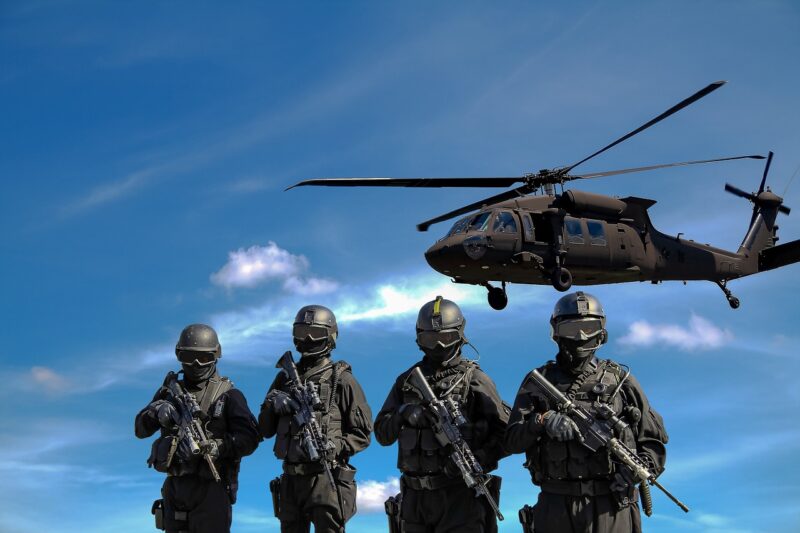Police Training Around the World: How Recruits Are Trained for Public Safety
November 14, 2024

Police training is a critical aspect of ensuring public safety and the effective functioning of law enforcement agencies worldwide. From rigorous physical training to mental preparedness and community engagement strategies, police recruit training encompasses a wide array of skills essential for modern policing. Every nation has its own unique approach to police training, influenced by cultural, historical, and legal contexts.
In this article, we will explore how police recruits are trained across the globe, examining various training programs, methodologies, and the evolving nature of law enforcement education in response to contemporary challenges.
1. The Importance of Police Training
The primary aim of police training is to prepare recruits to uphold the law while maintaining public safety and order. Effective training provides officers with the necessary tools to handle diverse situations, including:
- Crisis Management: Officers must be equipped to manage high-stress situations, from domestic disputes to potential violent confrontations.
- Community Policing: Training emphasizes building relationships within the community, fostering trust, and understanding community needs.
- Legal Knowledge: Recruits need to understand legal statutes, the Constitution, and the rights of citizens to perform their duties lawfully.
- Cultural Competency: Given the diverse nature of populations, recruits must be trained to interact sensitively and effectively with people from various backgrounds.
Ultimately, a well-trained police force is essential for maintaining peace and protecting citizens, which in turn strengthens public trust in law enforcement agencies.
2. Overview of Police Training Programs by Region
Police training varies significantly across regions, reflecting local laws, customs, and societal expectations. Here’s an overview of how some countries approach police recruit training:
2.1 North America
In the United States, police training typically occurs at police academies, which vary in terms of duration and focus areas. Most programs include:
- Duration: Training can last anywhere from 6 months to a year, with comprehensive coursework.
- Curriculum: Training includes physical fitness, firearms training, emergency medical response, and legal education.
- Field Training: Recruits often complete a significant amount of field training under the supervision of experienced officers to gain real-world experience.
2.2 Europe
European countries often adopt a more lengthy and academic approach to police training:
- Duration: Basic training can last two to three years, often integrated with higher education curriculums.
- Curriculum: Training includes ethics, sociology, psychology, and extensive legal knowledge, in addition to practical skills.
- Specializations: Officers often pursue specializations within various fields, such as cybercrime or community policing.
2.3 Asia
In many Asian countries, police training combines traditional techniques with modern methodologies:
- Duration: Training can vary widely, often lasting from six months to over a year.
- Curriculum: Emphasis is placed on physical training, ethics, and law, with an increasing focus on community engagement.
- Practical Exercises: Practical training scenarios, including simulations of crime scenes and emergency responses, are common.
2.4 Africa
African countries often lack resources, which poses challenges to police training:
- Duration: Training programs can last from several months to two years, depending on the country.
- Curriculum: Programs emphasize local laws, human rights, and community policing but may lack advanced tactical training.
- Community Focus: Training increasingly seeks to address community issues, focusing on building relationships rather than simply enforcing the law.
3. Modern Trends in Police Training
As society evolves, so does the nature of policing. Some of the modern trends shaping police recruit training today include:
3.1 Emphasis on De-escalation Techniques
The growing awareness of social unrest and police-community relations has led to an increased focus on de-escalation techniques in training. Officers are now taught to manage conflicts peacefully and understand verbal and non-verbal cues.
3.2 Mental Health Training
Recognizing the impact of mental health issues on law enforcement interactions, many programs are incorporating mental health awareness into the curriculum. Training includes how to recognize signs of mental illness and how to interact with individuals in crisis.
3.3 Technology Integration
With advancements in technology, recruits are increasingly trained on the use of digital tools and methods. This includes:
- Body Cameras: Understanding the operational use and implications of using body-worn cameras during encounters with the public.
- Social Media Monitoring: Training includes navigating social media platforms as tools for gathering intelligence and engaging with the community.
- Cybercrime Awareness: As cybercrime becomes more prevalent, recruits are trained to recognize and investigate digital crimes effectively.
4. Challenges in Police Training
Recognizing the impact of mental health issues on law enforcement interactions, many programs are incorporating mental health awareness into the curriculum. Training includes how to recognize signs of mental illness and how to interact with individuals in crisis.
3.3 Technology Integration
With advancements in technology, recruits are increasingly trained on the use of digital tools and methods. This includes:
- Body Cameras: Understanding the operational use and implications of using body-worn cameras during encounters with the public.
- Social Media Monitoring: Training includes navigating social media platforms as tools for gathering intelligence and engaging with the community.
- Cybercrime Awareness: As cybercrime becomes more prevalent, recruits are trained to recognize and investigate digital crimes effectively.
4. Challenges in Police Training
While police training plays a crucial role in public safety, various challenges persist globally:
- Resource Limitations: Many regions struggle with financial and infrastructural constraints, leading to inadequate training resources.
- Cultural Attitudes Towards Law Enforcement: Societal views can impact the effectiveness of training programs, especially in areas with strained police-community relationships.
- Ongoing Training Opportunities: The necessity for continuous education is often underappreciated, given the rapidly changing nature of crime and policing methodologies.
Figuring out how to effectively train recruits while addressing these challenges is key to enhancing public safety and trust in law enforcement.
5. Conclusion
Police training plays a vital role in creating a safe environment for communities around the world. By examining the diverse training methods, programs, and challenges faced, we can better understand how law enforcement agencies prepare their recruits for the multifaceted nature of modern policing.
As policing continues to evolve, investing in comprehensive training that prioritizes community engagement, legal knowledge, and mental health awareness will foster a more effective and trusted police force across the globe. By recognizing the critical role of training as a foundation for public safety, societies can take significant strides towards building effective and trusted law enforcement agencies.







